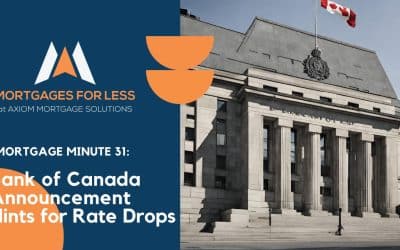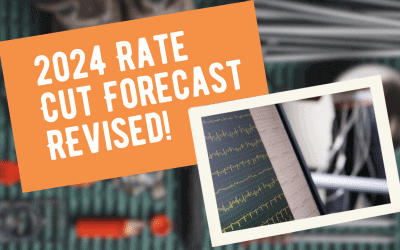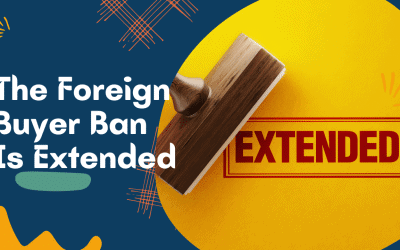The Battle Against Inflation Continues!
Bank of Canada Continues Their Trend. Raises Rates Another .75%
The War in Ukraine, Continuing Effects of Covid-19, and Volatile Commodity Rates To Blame.
Our Take
The government continues to battle the sky-high interest rates caused by continued Covid-19 lockdowns in China, supply chain issues, the war in Ukraine, as well as continued economic pressured caused by the pandemic. These rate hikes continue to have huge implications on the mortgage and housing markets.
Want to Talk?
Don’t worry we are always here to answer your questions. In this changing rate environment it is more important than ever to work with a qualified mortgage broker. Apply Now or use the form to schedule a call and we can walk you through your options and show you the best path forward.
Speak With An Agent
The Battle Against Inflation Continues

Well, the Bank of Canada did it again! Both Economists and Bankers were expecting it, and consumers were bracing for it.
On September 7th, the Bank Raised interest rates for the 5th consecutive time, by an additional 75 basis points, bringing the rate to the highest point since the 2008 global financial crisis. This brings the retail prime lending rate from 4.7% to 5.45%. Variable rate mortgages are generally offered at 0.9% below that, so variable rate holders will now see their interest rates, and in most cases, their payments, rise to about 4.55% depending on the discount. This brings variable rate mortgages to about the same rate as discounted 5-year fixed rate mortgages.
Well, back in July, the bank told us that this would be coming, and most economists expected the rate to rise by 1% more before the end of the year. The biggest question was how quickly. Now it appears that 1% estimate was a bit low and we will see a bit more increase before the year is over.
The bank tells us that Global inflation remains high and measures of core inflation are still moving up in most countries. In response, central banks around the world continue to tighten monetary policy.
The bank attributes the now 6-month long war in Ukraine, ongoing COVID-19 lockdowns in China and volatile commodity prices as the main drivers of elevated global inflation. But of course, elevated consumer demand can’t be ignored either, and really, that is what the interest rate hike will be able to address.
Central banks tend to worry when people and businesses expect inflation to remain high because it can lead to a self-fulfilling prophecy: businesses set future prices higher, while workers negotiate future wage increases to match up with their expectations of inflation.
Looking at this graph again, we can see that inflation in Canada dropped over the summer months. This was due largely to the reduction in gasoline prices. When we ignore that, inflation is still a concern. We all know that everything costs more now, and not just lumber and building supplies, but groceries and services.
It doesn’t take a PhD in Economics to understand that domestic rate increases won’t solve international pressures on price and supply constraints.
So why should this work? Well, an Equifax report dated September 6th indicates that Canadians are incurring more debt with a massive 8.2% increase over last year and the highest per capita credit card balances since 2019. Non mortgage debt is now over $21,000 per person. Higher interest rates stimmy willingness to borrow, which in turn reduces spending on non essential goods.
WHAT WILL THIS COST ME?
This rate change of 75 points equates to approximately $41 increased payment per $100,000 that you owe, assuming a 25 year amortization period.
SHOULD YOU LOCK IN?
And with a typical variable mortgage rate of 4.55%, that rate is now almost as high as the discounted fixed rates out there. Our non-bank lenders are all offering 5-year fixed rates of about 4.6%, while the major banks are stubbornly keeping their rates above 5%.
Should you lock in now? That is a complicated question with no clear answer. What I can tell you is that I am not locking in my mortgage. I have a variable rate mortgage at 4.55% and do see that it will go above what I can lock in at today. I ran a scenario where 4.59% is an option now for 5-years – , or a 75 point increase to the rate by the end of the year, and then a quarter percent rate drop starting in January 2024, and once every 6 months for the rest of the term. That is approximately the break-even point with only $307 savings on the variable when compared to a fixed rate. Now, if we add two more rate drops in 2024, now the savings are over $1600 per $100,000 over the next 5-years. What this doesn’t show you is what could happen if you hang tight with your variable rate, and then lock in later if or when fixed rates are lower. If a fixed rate comes along in a year or so that is closer to 3% or 3.5%, that might be a moment of regret should you be locked in at today’s rate. I still believe that there is a good case for taking a variable rate today, or keeping the variable rate you might already have, and then monitoring fixed rates for a good opportunity to lock in lower in the future.
CIBC’s Avery Shenfeld ius CIBC Capital Markets’ Chief Economist and he agrees that additional rate hikes beyond October are a possibility BUT that there should also be some consideration for the time it takes for rate hikes to start impacting inflation and the economy. “A front-end loaded strategy for rate hikes is designed to take rates up quickly, but also behooves the central bank to pause at some point to see how the economy is coping, given that there is a lag in seeing that response in growth, and an even longer lag for its impacts on inflation.”
Thankfully there are signs of changing consumer behaviour. Recent surveys in Alberta suggest a change in consumer spending, but it hasn’t been enough. The Bank’s Governing Council still judges that the policy interest rate will need to rise further. How much further is still the million dollar question. With that said, like I mentioned before, the consensus seems to be that rates will increase either 50 or 75 more points before the end of the year where they should then stay level for about a year before trending back down toward neutral territory.
WHAT ABOUT THE HOUSING MARKET?
With higher mortgage rates, the housing market is pulling back as anticipated, following unsustainable growth, especially in Canada’s largest markets of Toronto and Vancouver, during the pandemic. In Alberta, we didnt see nearly the increase in values that those markets saw and we are not expecting anything near the pull back that those markets have seen and are seeing. Both Edmonton and Calgary remain some of the most affordable major city housing markets in the world. Affordability is a measure of income compared to home prices.
In Calgary, the local real estate market has come off the record activity levels we saw in the spring. As far as price drops, that has really happened only in the higher end of the market, as buyers are showing more restraint, but these buyers are still buying, which is keeping some elevated competition in the more affordable price points. That said, the market is turning to be more balanced which benefits buyers. We are not seeing the same multiple offers or the need for condition free offers. Buyers are able to see a property more than once before making an offer, and are able to include finance and home inspection conditions in their offers – something we didn’t see much earlier in the year. In Edmonton, it didn’t get as difficult for buyers, but the trend toward balance is similar, if even better for buyers.
Alberta Real Estate is still buoyed by heavy inmigration. With more remote work options, we continue to see interprovincial movement toward our cities as people leave the Toronto and Vancouver markets, for a better and more affordable lifestyle we have here. With over 400,000 new immigrants coming to Canada over the next year, we will continue to see a demand for housing, and some estimates put as many as 90% of those new comers choosing to make Alberta home.
CONCLUSION
As always, I will end with an invitation to reach out to me and the team if you have any questions or concerns about your mortgage, or about getting out there and snatching up a home while there are some good deals to be had. Thank you!
Meet The Author
Josh Tagg started his career as a mortgage broker in 2006. During his award-winning career, he has helped thousands of individuals and families secure mortgages for their homes.

Josh Tagg
Owner, Mortgages For Less




0 Comments
Trackbacks/Pingbacks